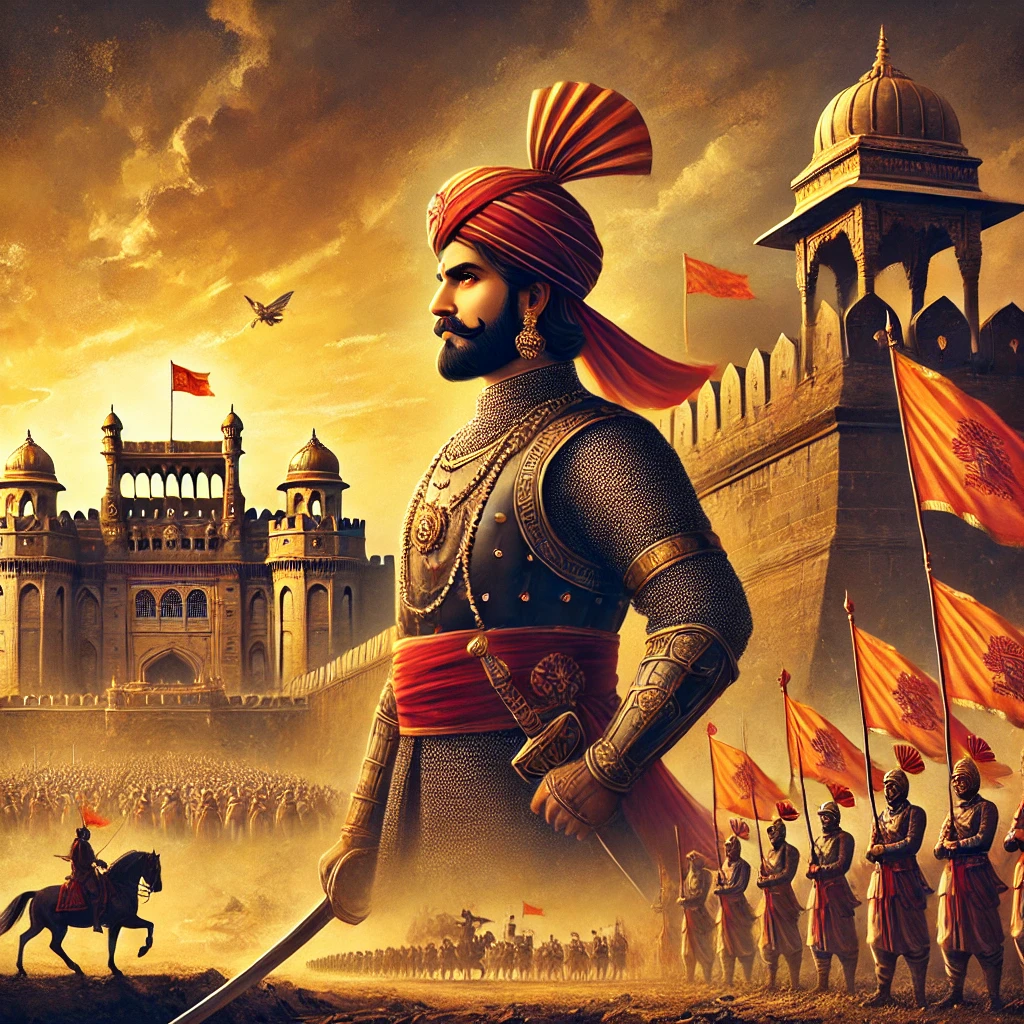Kumbh 2025: The Grand Spiritual Gathering of Humanity
Kumbh Mela is not just a religious congregation; it is an awe-inspiring event that embodies the spiritual essence of India’s rich cultural heritage. Recognized as the largest gathering of humanity in the world, Kumbh 2025 in Prayagraj is set to welcome millions of pilgrims, travelers, and seekers from across the globe. This blog provides an in-depth look into the historical and spiritual significance, practical details for visitors, cultural impact, and tips for competitive exam aspirants. Dive in to discover why this grand event should be on your must-visit list and how it remains relevant for those preparing for exams.
Historical and Spiritual Significance of Kumbh Mela
The origins of the Kumbh Mela are deeply rooted in ancient Indian scriptures and mythology. The term “Kumbh” translates to “pot” in Sanskrit, symbolizing the pot of nectar obtained during the Samudra Manthan (the churning of the ocean). According to Hindu mythology, the gods and demons collaborated in this cosmic event to retrieve the nectar of immortality. During their struggle, four drops of the nectar spilled on Earth, landing at Prayagraj, Haridwar, Nashik, and Ujjain, making these locations sacred for the Kumbh Mela.
The event’s spiritual significance lies in its promise of spiritual cleansing and liberation. It is believed that taking a holy dip in the rivers at these sacred sites washes away sins and helps individuals attain moksha (liberation). This belief draws millions of devotees to the Kumbh Mela, making it a vibrant celebration of faith, devotion, and unity.
In addition to mythology, Kumbh Mela has historical relevance. It has been mentioned in ancient texts like the Rigveda and accounts by Chinese traveler Xuanzang (Hiuen Tsang) during the 7th century. Over centuries, it has evolved into a global phenomenon, recognized as an Intangible Cultural Heritage of Humanity by UNESCO.
Practical Details: Dates, Location, and Rituals of Kumbh 2025
Kumbh 2025 will be held in Prayagraj, Uttar Pradesh, at the confluence of three sacred rivers: Ganga, Yamuna, and the mythical Saraswati, also known as the Triveni Sangam. The festival will take place between January 13 and March 12, 2025, during the auspicious Hindu calendar months of Paush and Magha.
Key Rituals to Witness:

- Shahi Snan (Royal Bath):
- The grand processions of saints, sadhus, and akharas (spiritual organizations) to the river for the holy dip.
- Scheduled on specific dates, these processions are a sight to behold, filled with chants, music, and traditional attire.
- Kalpavas:
- Devotees known as Kalpavasis stay near the riverbanks for a month, following strict spiritual practices like fasting, meditation, and prayer.
- Peshwai Processions:
- Celebratory parades of saints and their disciples showcasing the cultural and spiritual grandeur of India.
- Bhajans and Kirtans:
- Soulful devotional music that fills the air, creating a spiritually uplifting environment.
Key Bathing Dates (Snan):
- January 14, 2025 – Makar Sankranti: Marks the first royal bath, considered highly auspicious.
- January 29, 2025 – Paush Purnima: A full moon day significant for spiritual activities.
- February 19, 2025 – Mauni Amavasya: The most sacred bathing day, attracting the largest crowd.
- March 10, 2025 – Mahashivratri: The concluding bathing day, dedicated to Lord Shiva.
Travel Tips for Visitors: How to Plan Your Kumbh Experience
A successful Kumbh visit requires proper planning. Here are some essential tips to make your journey smooth and fulfilling:
1. How to Reach Prayagraj:
- By Air: The nearest airport is Bamrauli Airport, Prayagraj, which connects to major Indian cities.
- By Train: Prayagraj Junction is a central railway hub with excellent connectivity across India.
- By Road: Buses and taxis operate regularly from cities like Varanasi, Lucknow, and Kanpur. Travelers can also opt for private vehicles for convenience.
2. Where to Stay:
- Accommodation options include:
- Government tents for budget travelers.
- Dharamshalas (pilgrim rest houses) near the Sangam area.
- Luxury camps for those seeking comfort with spiritual ambiance.
- Hotels in Prayagraj city with pre-booking facilities.
- Pro Tip: Book your stay well in advance through official websites or trusted travel portals.
3. What to Pack:
- Comfortable clothing and sturdy footwear suitable for long walks.
- Essential items like toiletries, a first-aid kit, and reusable water bottles.
- Identification documents, travel tickets, and photocopies of important papers.
- Power banks and weather-appropriate gear (like shawls or umbrellas).
4. Safety and Crowd Management:
- Follow official guidelines for crowd control and bathing.
- Always travel in groups and keep emergency contact numbers handy.
- Avoid carrying valuables and remain cautious of your belongings.
Cultural Impact and Local Attractions to Explore
Kumbh Mela is a melting pot of spiritual and cultural experiences. Beyond the rituals, visitors can immerse themselves in the rich heritage of Prayagraj and its surroundings.
Highlights of Kumbh Mela:
- Art and Handicrafts: Local artisans display traditional crafts, textiles, and souvenirs. Don’t miss the chance to take home authentic handmade items.
- Culinary Delights: Enjoy free community meals at langars and relish local vegetarian specialties from street vendors.
- Lectures and Discourses: Spiritual leaders deliver enlightening talks on life, philosophy, and devotion.
Nearby Attractions:
- Triveni Sangam:
- The sacred confluence of the Ganga, Yamuna, and Saraswati rivers.
- Ideal for a boat ride and serene views.
- Anand Bhavan and Swaraj Bhavan:
- Ancestral homes of the Nehru family, now converted into museums showcasing India’s freedom struggle.
- Allahabad Fort:
- A historical marvel with attractions like Ashoka’s Pillar and the Saraswati Kup (a mythical well).
- Bharadwaj Ashram:
- A serene spot steeped in mythological significance.
- Khusro Bagh:
- A beautiful Mughal garden housing the tombs of Prince Khusro and his family.

Relevance for Competitive Exams
For students preparing for competitive exams like UPSC, UPPSC, and state-level tests, Kumbh Mela is a significant topic under culture, history, and current events. Key points to focus on:
- Historical Background: Its mythological origins and references in ancient texts.
- Cultural Significance: How it reflects India’s diversity and spiritual ethos.
- Current Relevance: Government measures for crowd management, safety protocols, and the economic impact of the event.
- Geographical Insights: Locations of Kumbh Mela and their connectivity.
Why Kumbh 2025 Should Be on Your Must-Visit List
Kumbh Mela is more than just a religious event; it is a journey of faith, self-discovery, and cultural exploration. The vibrant confluence of humanity, traditions, and spirituality makes it an unforgettable experience. Whether you are a pilgrim seeking divine blessings, a traveler exploring India’s heritage, or a student eager to learn about its cultural impact, Kumbh 2025 offers something for everyone.
Prepare Better with SR Study
Aspiring to excel in competitive exams? SR Study is your trusted partner for comprehensive preparation. From mock tests to detailed study materials, we’ve got you covered.
- Visit Now: SR Study for top-notch resources tailored for exams like UPSC, UPPSC, and more.
- Exclusive Offer: Access free current affairs updates, expert insights, and more on blog.srstudy.com.



